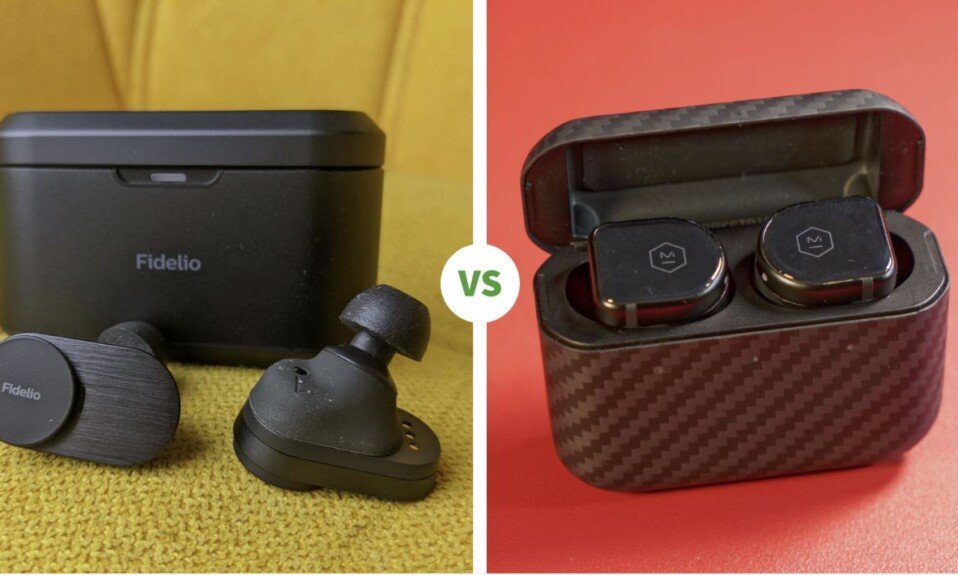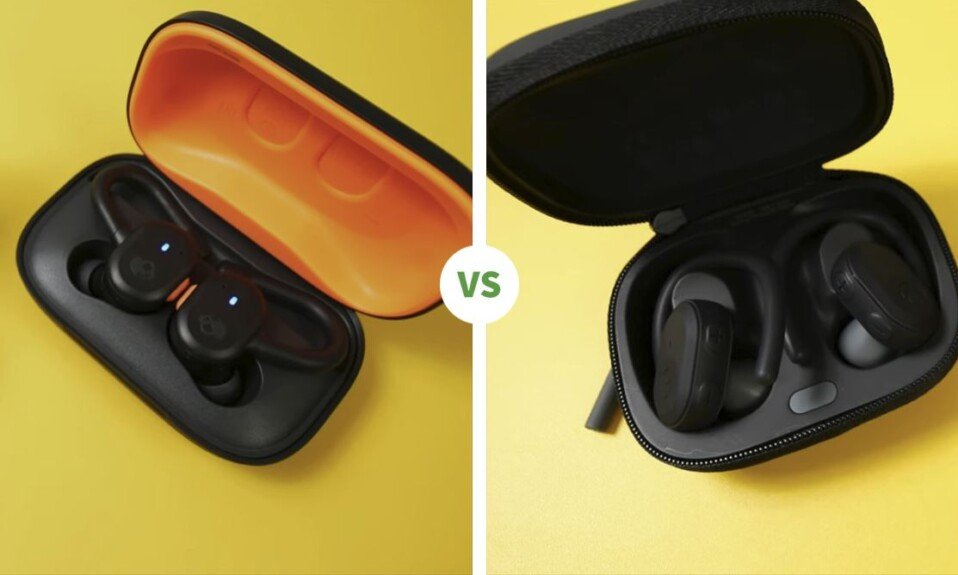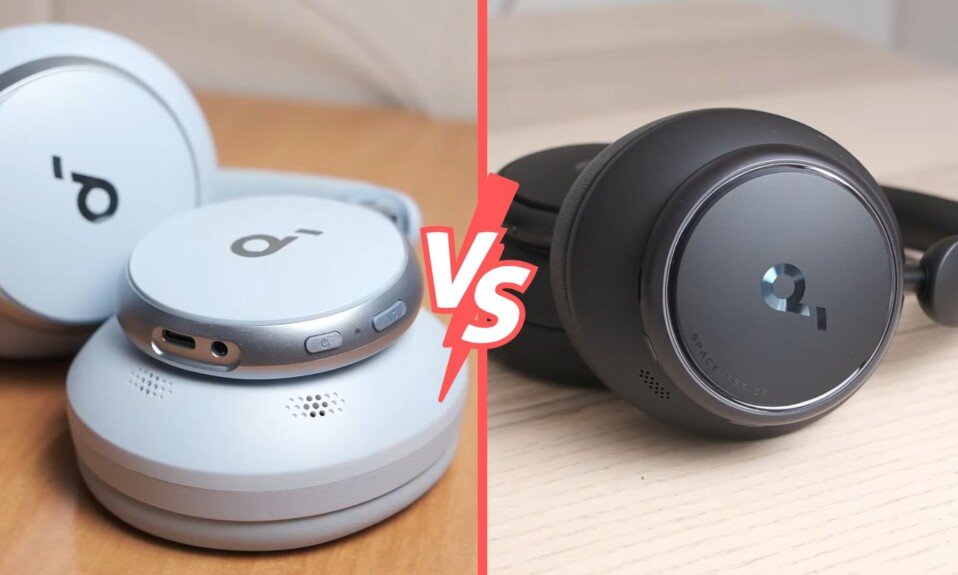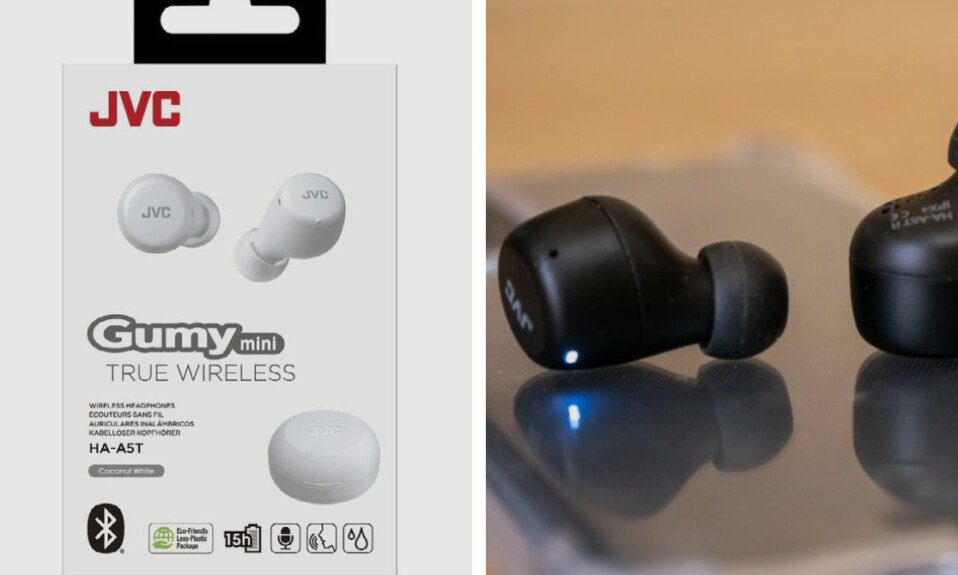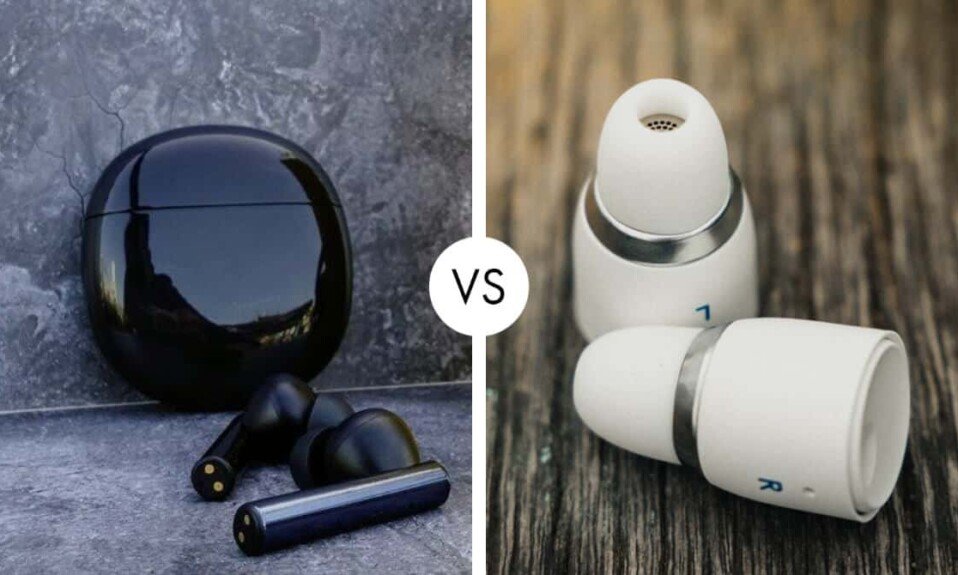The prestigious range of the Philips brand, Fidelio, is synonymous with luxury and impeccable sound quality. After the recent X3 and L3 update of its classic headphones, the manufacturer is attacking the market for high-end True Wireless headphones (for 300 USD) with the new Fidelio T1.
You’ve already heard about New York-based premium audio designer Master & Dynamic for its premium wireless earphones line. This has recently been enriched by the MW08 Sport, a version optimized for sports activities of the MW08.
As we had not had the opportunity to compare the original models, we were eager to see what these new headphones were worth. Check out Philips Fidelio T1 vs Master & Dynamic MW08 Sport ANC True Wireless Earphones.
| Philips Fidelio T1 | Master & Dynamic MW08 Sport |
| Good sound quality | Good sound quality |
| Long battery life | Mechanical controls |
| LDAC support (and good stability) | Impeccable construction |
| Not for all ears | Expensive |
We cannot blame Philips for not putting the shapes. The luxurious proposition, Klipsch style, is perfectly successful from the case to the headphones.
Nothing is to report whether in terms of density or quality of the hinge. We can nevertheless point the finger at the dimensions and the weight of this box (8.49 x 5.15 x 3.24 cm for about 100 g with headphones), which makes it very difficult to place in a trouser pocket. We made the kind of criticism over two years ago with the Sony WF-1000Xm3.
This is not the first time Master & Dynamic has offered its wireless headphones in a sporty version. In the MW07 Plus, we briefly touched on the MW07 GB, priced a little less because it saw itself stripped of certain attributes.
Specification
| Philips Fidelio T1 | MW08 Sport | |
| $ | CHECK PRICE | CHECK PRICE |
| Model | Fidelio T1 | MW08 Sport |
| Brand | Philips | Master & Dynamic |
| Type | In Ear | In Ear |
| Foldable | No | No |
| Frequency Response | 7 – 40 000 Hz | – |
| Sensitivity | 103 dB (1K Hz) | – |
| Driver | Dynamic | Dynamic |
| Water Resistance | IPX4 | IPX4 |
| ANC | Hybrid, ANC Pro+ | Hybrid ANC |
| Bluetooth | Bluetooth 5.2 | Bluetooth 5.2 |
| Controls | Yes | Yes |
| Battery Life | Up to 13 hours | Up to 12 hours |
Design
The headphones combine an outer body covered with brushed aluminum and an inner part with a very eye-catching rubber surface. The blend is close to perfect. The Fidelio T1s are dense and clearly above the manufacturing average for high-end headphones. Only the IPX4 certification is “only” in the average for products of its kind.
This quality is largely found in the charging case. It is very imposing and heavy; its outer casing is gray/black anodized aluminum. Note that a white version of the headphones also exists. Only the base is in the polymer of the same color to integrate the charge by induction.
Philips takes the party of earphones stretching in length, again in the WF-1000Xm3 way, with an outer tray extending far beyond the ear. Everything is at the same time elegant and a little too massive.
The entire stylistic choice can be divisive. We can, for example, evoke the back of the product, whose touch zone is placed on a slightly raised circle.
We will be much more critical of comfort, which largely misses its mark. Of course, True Wireless is never universal from this point of view, but the use of a short and thin cannula, as well as a well-balanced earpiece, makes it possible to open up to a fairly large audience. Here the problem is twofold.
The oval cannula is not too long but much wider than the average, more than 8 mm on its top section. With all the goodwill in the world, and despite many tips (a set of five silicone tips and a set of three foam tips from Comply), the model will not be able to fit into the ear of a good part of the users. And even so, being used to in-ear headphones, the product can be felt permanently in the ear. We understand the value of keeping a large cannula for the sound, but a better balance could have been found.
Conversely, the hold is good if the placement is well found and the right tips are used (Comply foams are more effective). The Fidelio T1 can then stay fairly well in the ear, despite their weight and apparent lack of balance.
For the MW08 Sport, the manufacturer has made the opposite choice, and these headphones are sold 50 euros more expensive than their big brothers. This difference is explained in particular by the use of Kevlar for the production of the charging case, a material compatible with induction charging (which is not the case with metal cases normally used).
Another improvement is the use of memory foam tips, more suitable, according to the manufacturer, to support athletes in their hectic activities.
A total of eight pairs of ear tips accompany the MW08 Sport: two are made of memory foam, the others being made of a classic silicone. As always with intras, it is strongly recommended that you experiment with different ear tips to find the best fit. This makes it possible to obtain a pleasant wearing, a more authentic sound, and especially to benefit from successful passive isolation.
As was already the case with previous models, the MW08 Sport benefits from the excellent build quality. The headphones are main aluminum and sapphire glass, characterized by their hardness (only diamond can scratch it).
The cannula on which the tip of each earpiece is attached has the advantage of not being very long, thus avoiding an unpleasant sensation of intrusion into the ear canal. We were thus able to use the MW08 Sport for several hours at a time without feeling any discomfort.
When it comes to practicing a sporting activity, the maintenance remains less good than announced. If it remains rare and subject to sudden movements, it can happen to lose them (including shape memory tips). We have found ourselves regretting the Fit Wings; these silicone fins fitted to the MW07 Plus. Hopefully, Master & Dynamics will reintroduce them quickly, especially on models dedicated to Sport.
Sound
Fidelio T1- Like the very good Samsung Galaxy Buds Pro, the Philips Fidelio T1 does not stop at a simple single-transducer design. The brand has chosen a less common topology on True Wireless headphones: the hybrid architecture and two lanes.
This means that a single transducer does not provide audio reproduction but is divided into two ranges with several speakers. The hybrid side means that the transducers used are not all the same types. Here a 10mm dynamic driver is used for bass and midrange representation. For the treble, a balanced armature transducer is built into the structure. This type of speaker, smaller, is generally more efficient at high frequencies and is quite well suited to multi-channel structures.
The quality in the mids is equally satisfactory. The voices are neither veiled nor overly emphasized; this register is exactly what one can ask of a technical model: it rests only on its quality and not on accentuations. A little oddly, using the silicone tips can slightly accentuate the upper mids, resulting in a clearer feel.
Unlike most headphones of this genre, there is hardly any overflow, no overly artificial sounds. Of course, we cannot talk about large headphones, but we are already touching the finger on what can exist in good wired products. The expansion is there, and the level of detail is really above the fray. Tracks emphasizing clarity benefit greatly from this sonic mastery, and aggressive tracks avoid overflow and overload.
The soundstage is not exceptional, but already large enough and very coherent. Projecting itself a little more forward would gain even more quality.
For who? For just about everyone. The Philips is a synthesis of good sound points in this segment. Lovers of bass will turn more to the Sony WF-1000Xm4, which also better master this range of frequencies. But the treble is much more to the advantage of the Philips Fidelio T1. The headphones, almost flawless, clearly join the best of their kind in this area.
The MW08 Sport headphones each have an 11 mm beryllium membrane driver. They produce a sound that we do not hesitate to call excellent. The reproduction of low frequencies is faithful and without them being intrusive. At the opposite end of the spectrum, the highs are precise and well defined, while the mids assert themselves quietly without stepping on the beds of the previous ones. Finally, the stereophonic spatialization is convincing.
These observations, made without activating the noise cancellation, remain valid when the ANC is activated, even if one can note very slight muffling of the sound. It’s nothing dramatic, and listening to rock, classical music, variety, or rap was overwhelming with or without noise cancellation.
A Bluetooth 5.2 chip ensures the connection. It offers a significant range, and we could walk more than 10 meters from the connected smartphone without deterioration of the quality or loss of the signal. The MW08 Sport has AAC, SBC, and adaptive aptX codecs on board.
The active noise cancellation offered by the MW08 Sport is of good quality. It remains a notch below what the market leaders offer but remains effective, especially completed by its passive counterpart enabled by the memory foam tips.
Controls
Fidelio T1- Here, play/pause requires pressing on the right earbud for one second. To go to the next track, you must press the same zone three times. By pressing twice, it toggles between the different active noise reduction modes. Finally, a long press on the button temporarily lowers the volume and activates sound feedback. The volume and reduction mode return to normal once the finger is removed. This mode is generally equivalent to certain Sony headphones type WH-1000Xm3 or the Sennheiser PXC 550.
We are entitled to a hell of an austerity cure for the left earphone. It’s simple; you can only trigger a long press, which calls up the phone’s default assistant.
Before talking about the efficiency of the controls, we can already note the real sobriety of these. Full navigation is not possible, and no volume control is involved. There is no need to hope to fix this with the application since there is no commands assignment.
MW08 Sport- No change is to be noted on the control keys. They are always mechanical – for our greatest pleasure, they are located on the edge of the headphones. The one on the left has two; the right has only one. Easy to spot with the finger, thanks to the slight bump formed by the buttons, the controls of the MW08 clash with the now traditional tactile zones.
Their placement on edge avoids exerting pressure perpendicular to the ear to use them, overcoming any discomfort during handling, however frequent it may be. This changes the pressures or touches to be made on the external decks, which inevitably push the headphones into the ear and therefore quickly cause annoying discomfort in the event of frequent use.
In addition to adjusting the volume, the keys are used to navigate in a playlist, invoke the voice assistant, take a call or hang up. A long press on VOL – will activate/deactivate the ANC, the same operation on VOL + acting on the ambient listening mode (improved perception of the outside). Finally, each earphone has a proximity detector on board to suspend the reading when we remove them from our ears.
The MW08 Sport is IPX5 certified, therefore sold as splash-proof. If we’ve seen better, that’s still enough to protect against splash, rain, or sweat.
Application
Fidelio T1- The app itself has a fairly nice clean interface, which presents the battery level of the headphones and the box in a precise manner. Access to noise reduction settings is clear and well laid out. It is, for example, possible to finely adjust the sound feedback or even to ask him to concentrate on the vocals. In addition, an adaptive mode makes it possible to adapt its reduction or sound feedback to the situation. This mode analyzes the position of the listener and the external noise. Without being very well adapted to the rapid changes of situations, it can be effective in certain situations.
In addition to this setting, an equalizer is placed in a small tab. Unfortunately, only four preset equalizers are available; it is impossible to customize your own. Too bad because this kind of high-end headset normally lends itself very well.
Within the “advanced” settings, it is possible to deactivate the touchscreen, or the proximity sensors of the device (automatic play/pause by removing or removing the headphones), to activate the return of his voice in the call activate the multipoint connection. Finally, it is possible to define an automatic shutdown of the headphones after a certain period of inactivity.
Therefore, the application is not too bad, but all the same very limited, and above all marked by a certain instability.
MW08 Sport- Master & Dynamic did not offer a companion app for a long time. Things changed with the marketing of the MW08s, the first headphones to benefit from them.
Soberly called MD Connect provides minimal service for both Android and iOS. In addition to updating the internal software, it allows the setting of the standby time, the activation (or deactivation) of the proximity detector, and the active noise cancellation.
The ANC takes advantage of three levels: “deactivated,” “daily life,” or “noisy environment.” The now traditional “perception” mode is also celebrated. Finally, a user manual mainly made of sketches is available on the application, but neither is translated into French. This shouldn’t be a handicap, given the little text used.
Battery
Fidelio T1- Fortunately, the large volume occupied by the headphones allows a good size battery to be placed in them. Thus, battery life is announced at no less than 9 hours with active noise reduction and 13 hours without. A figure which is largely at the height of the Sony WF-1000Xm4. In addition, the box brings up to two additional refills.
In practice, the promise of this rather exceptional endurance is rather kept. We arrived around 8:45 am with ANC (AAC codec) and at 12:30 pm without ANC (also AAC codec), almost a record in this area, largely in line with Sony, or even a little better depending on the conditions. In short, the very top of the basket.
MW08 Sport- By default, we will use the USB-C port of the case to charge the headphones. Master & Dynamic promises up to 12 hours of continuous listening time (10 hours with active noise cancellation). The battery integrated into the case adds about thirty additional hours, depending on the brand, the whole totaling 42 hours of use, therefore. In real life, where we listen to music at 75-85% of max volume, watch videos, and phone, we have reached an battery life of 8 hours per charge (with active cancellation noise).
The case certainly quadruples this result, and we easily exceed the thirty hours in total battery life. Finally, good point for the speed of charging. 15 minutes are enough to go from 0 to 50% charge, 100% being reached in 45 minutes. The case battery also requires 15 minutes to be half-filled, 60 minutes for 100% charge (respectively 30 and 100 minutes if using induction charging).
Conclusion
Difficult to pass judgment on the Philips Fidelio T1. If we were to stop at the luxury, sound quality, and battery life, all would be for the best in the best of all possible worlds, and they would be in direct competition with the Sony WF-1000Xm4.
Unfortunately, we feel that Philips has not fully embraced the modern codes of the genre. Comfort, to begin with, is likely to be a big drag for some of the public. Likewise, the frankly truncated ergonomics and the still unstable application do not help to appreciate the great technical qualities of the product.
The MW08 Sport is undoubtedly successful headphones. In addition to good ergonomics, and we appreciate their autonomy, ergonomics, and build quality. If you don’t need induction charging, memory foam tips and don’t mind scratching them, you’d better go to the technically identical MW08s, though, but they are sold (a bit) cheaper.
